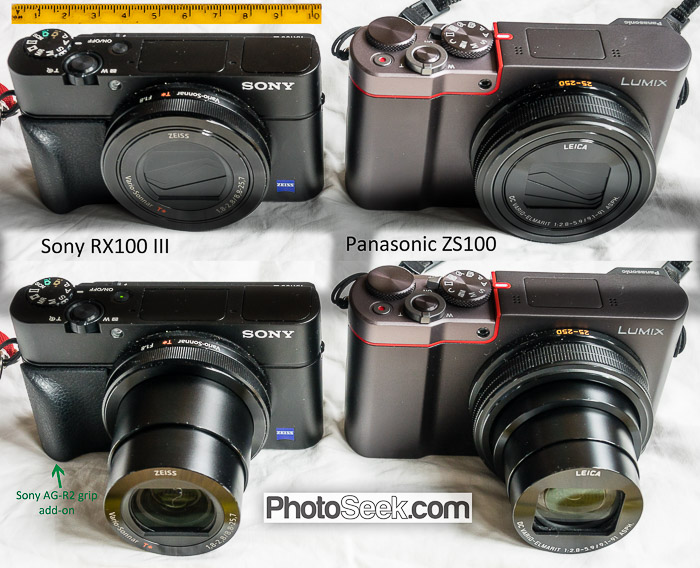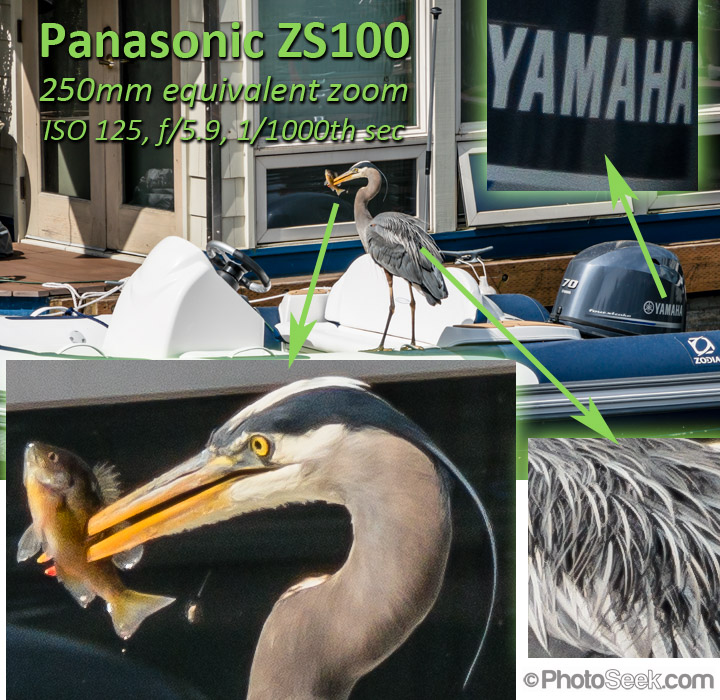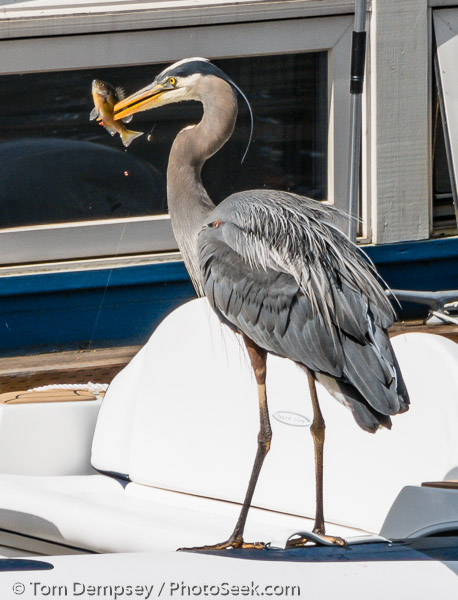In 2016, the most portable 10x zoom on a 1-inch-Type sensor is Panasonic LUMIX ZS100 camera (Amazon) (11 oz, 25-250mm equivalent). ZS100 is now my favorite camera which can fit a large shirt pocket. In this impressive 2016 feat of miniaturization, daylight image quality from the 20-megapixel ZS100 can rival all of my cameras used over 34 years until 2012 (beating my cameras up to 4 times heavier, up to 11x zoom range, up to 12 megapixels, at base ISO 100).
UPDATE: As of August 2018, Sony introduced the superior RX100 version VI (RX100M6, Amazon) (24-200mm equivalent 8x zoom with relatively fast f/2.8-4.5 lens), which is pricey but clearly beats the lens sharpness and brightness of Panasonic ZS100. If price is no object, RX100 version VI is now the world’s best pocketable travel camera, and Panasonic ZS100 is second best. In April 2018, Panasonic extended its ZS100 with the new 15x zoom Panasonic Lumix DC-ZS200 (buy at Amazon) (12 oz, 24-360mm equivalent lens f/3.3-6.4). The ZS200 viewfinder increases magnification by 15% and resolution by 35% (2.3M dots vs 1.7M for ZS100). CIPA battery life lengthens to 370 minutes (formerly 300). ZS200’s 50% longer zoom reach for wildlife costs a half-stop loss in lens brightness and compromises sharpness. Personally, I’m upgrading to the sharper Sony RX100M6, where I’ll simply crop to extend telephoto beyond 200mm equivalent.
Although rival Sony RX100 (of 2015, read my review) is admittedly sharper throughout 3x zoom, Panasonic ZS100 focuses closer at more zoom settings and enormously extends optical telephoto reach. Anywhere from 3x to 10x zoom (70-250mm equivalent), the ZS100 easily beats digital cropping of Sony RX100’s furthest reach of 70mm in versions III & IV. ZS100’s good telephoto remarkably expands your capture of wildlife and distant small subjects, more sharply than pocketable rivals or smartphones (see heron photo further below). Portrait photographers should note that ZS100’s lens is a bit dimmer, f/2.8-5.9 at widest aperture as you zoom (versus f/1.8-2.8 for RX100 III).

Compare body sizes:
- 102 x 58 x 41 mm (4.02 x 2.28 x 1.61″) Sony RX100 versions III and IV
- 111 x 65 x 44 mm (4.37 x 2.56 x 1.73″) Panasonic ZS100
Related reading: why larger sensors can improve image quality.
Panasonic ZS100 beats macro focus of Sony RX100
ZS100 captures best macro (close focus) when zoomed by 2x, near 44mm equivalent, to minimize excessive corner softness seen at wider angles of view. You must first press the Macro (Flower symbol/left toggle) button to focus closest. In contrast, Sony RX100 III focuses closest only at 24mm equivalent (widest angle of view), lacks a dedicated macro mode, and cannot enlarge subjects as much. Panasonic ZS100 can enlarge small subjects more sharply than Sony RX100.
Because macro was one of my main reasons for carrying an RX100 (to supplement a larger-sensor APS-C system with 11x zoom which captured poor macro), a ZS100 now serves better as our backup travel camera for my wife to carry.
Surprisingly good telephoto sharpness
Carrying a pocket camera with 10x zoom around town lets me capture unexpected moments like this at a distance:

The above overall image (originally 20 megapixels, 5472 x 3648) can be cropped to isolate the heron at 1764 x 1348 pixels, which is enough to print sharply about 7″ high (at 250dpi). Much better than a smartphone camera, Panasonic ZS100 gives you lots of leeway to share digitally cropped telephoto shots on the internet, as in the example below shrunk to 600 pixels high:

Just wanted to say thanks, as I’m looking to replace an RX-100 III with one of these, for the extra reach. Makes it a more desirable hiking camera to get closer shots of wildlife, which has been frustrating with the short reach of the RX-100 III for me. I also don’t want to spend the $$$ for the M6 version, which could be a future upgrade down the line (when used prices are under $500 :)